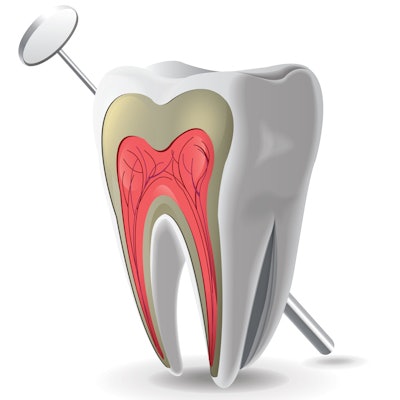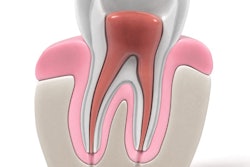
Is a patient less likely to experience flare-ups following root canal treatment after a single-session treatment, or are procedures performed over multiple sittings more likely to result in complications?
According to researchers from India, multiple-sitting root canal treatments were the standard taught in dental schools until recently, with single-sitting treatments becoming more popular for treatment and convenience reasons. But does a single-sitting treatment result in more endodontic flare-ups after treatment? Their study in the Journal of Contemporary Dental Practice looked at this question.
"Much debate exists regarding the completion of endodontic therapy in a single sitting or multiple sittings," wrote the authors, led by Harsh Piryank of the department of conservative dentistry and endodontics at the Hazaribagh College of Dental Sciences & Hospital in Hazaribagh, India (J Contemp Dent Pract, October 2016, Vol. 17:10, pp. 849-852).
Post-treatment flare-ups
Endodontic flare-ups are conditions characterized by "acute exacerbation of pulp or periapical pathologies" after root canal treatment has been started and can include pain and swelling, according to the study authors. In previous studies, slightly more symptoms and pain were reported in single-sitting procedures compared with multiple-sitting procedures, they noted. The researchers of the new study wanted to test the idea that a single-sitting approach would minimize these flare-ups for patients.
“Much debate exists regarding the completion of endodontic therapy in a single sitting or multiple sittings.”
The study included 200 patients (116 males) who underwent single-sitting endodontic therapy at Piryank's department at the Hazaribagh College of Dental Sciences & Hospital between May 2011 and June 2012. The patients were divided into four equal groups by age. The researchers noted each patient's age, sex, tooth type treated, periapical status, and pulp status. They isolated the patient's tooth to be treated using a rubber dam and used local anesthesia. The researchers found 70 of the patients had periapical pathologies. Irrigation was done using one of three solutions: 2.5% sodium hypochlorite, ethylenediaminetetraacetic acid, or cycloheximide.
In all, the authors reported that only six patients experienced post-treatment flare-ups after a single-sitting treatment. Of the six flare-ups, four were in female patients. Flare-ups were seen in the 11- to 20-year age group (2) and the 21- to 30-year age group (4). No patients in the older age groups experienced flare-ups.
Of the 70 patients with periapical pathologies, four reported a flare-up. Likewise, of the 122 patients where treatment was focused on nonvital pulp tissue, four reported flare-ups. The researchers also did not find any statistically significant results based on irrigation solution used for canal preparation.
Postoburation pain
The authors noted that while postobturation pain, pain between appointments, and swelling are the most commonly reported endodontic flare-ups, much of the time these last for a short term and without significant discomfort.
Previous research, including a 2013 study of 60 patients in Contemporary Clinical Dentistry, backed the results of this study. "There was a tendency for less incidence of significant pain after a single visit root canal treatment in these groups," the authors of the 2013 study reported.
"In terms of endodontic flare-ups, single-sitting endodontic therapy appears to be a safer and effective procedure even in cases with periapical pathologies," the authors of the current study concluded.



















